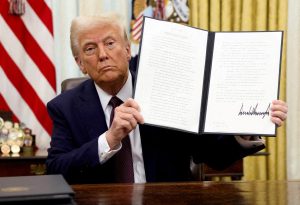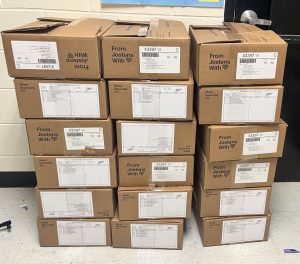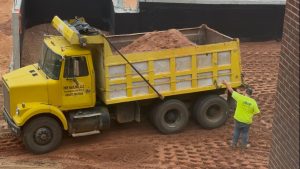North Korea Tests Nuclear Weapon Amid Rising Tensions
Sep 19, 2017
North Korea has once again panicked the world by detonating a hydrogen bomb on Sunday, September 3, 2017.
Sunday’s test was the most powerful bomb North Korea has ever tested, yet it still falls short of the magnitude of the American hydrogen bomb tested in 1952. It’s also not close to matching the strength of Castle Bravo, the most powerful nuclear bomb recorded, which was detonated by the United States in 1954. Nevertheless, people worldwide are reacting with panic.
In addition to the attention given to its strength, Sunday’s test is also on the international radar because Pyongyang claims that they have made the bomb compact enough to fit into an ICBM.
Senior Clare Schneider weighed in on the event.
“They are mostly all talk,” she said. “I don’t think it’s much big of a deal as people are making it. It’s kind of pointless to put all of our attention on them considering that they are not going to hurt us. I’m not too afraid of them. We did the hydrogen bomb years ago. Also, the United States has a really good protection system.”
Schneider also pointed out that the damage the U.S. could inflict in retaliation to any attack would be incomparably more destructive than anything North Korea could accomplish here.
This was North Korea’s 6th nuclear test, but likely their first test of a hydrogen bomb. While they claimed their test in September 2016 was a hydrogen bomb, U.S. experts determined this was unlikely due to the relatively small radiation readings. According to Pyongyang’s own news agency, KCNA, Sunday’s explosion of a hydrogen bomb is estimated to have been ten times more powerful in magnitude than their last experiment.
Hydrogen bombs, also regarded as the thermonuclear bombs, compress isotopes of hydrogen that cause fusion reactions. They are immensely destructive, 1000 times more powerful than atomic bombs. Traditional atomic bombs produce energy using fission, the process of splitting atoms into small parts. On the other hand, these more destructive hydrogen bombs employ fusion, or the process of uniting atomic nuclei, which is the same thing that powers the sun. When the bomb is released, the swarms of atoms join together and unleash neutrons in a wave of destructive energy.









